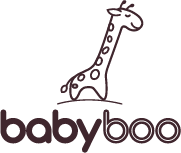Breastfeeding is a deeply rewarding journey, but it comes with its fair share of challenges. Whether you’re nursing directly or using a breast pump, effective techniques and reliable tools can make the process smoother for both you and your baby. This article explores evidence-backed tips and tricks for successful breastfeeding and pumping.

Establishing skin-to-skin contact immediately after birth fosters bonding and stimulates milk production. This practice triggers the release of oxytocin, a hormone that plays a key role in milk ejection. Studies have shown that early skin-to-skin contact can enhance breastfeeding success (Moore et al., 2016).
For pumping, creating a relaxing environment and visualizing your baby can mimic this connection, improving breast milk flow.

A correct latch is essential for effective breastfeeding. When the latch is proper:
-
Your baby's mouth will cover both the nipple and part of the areola.
-
Swallowing sounds indicate milk transfer.
Pain during breastfeeding may signal a poor latch, which can often be corrected with the help of a lactation consultant (Walker, 2013).

Comfort is vital for both you and your baby. Popular breastfeeding positions include:
-
Cradle Hold: Great for full-term babies.
-
Football Hold: Ideal for mothers recovering from a C-section.
-
Side-Lying Position: Perfect for nighttime feedings.
For pumping, invest in a comfortable chair and ensure the breast shields fit correctly. Research indicates that ergonomic positioning can reduce discomfort and improve breast milk flow during pumping (Kent et al., 2015).
4. Choose a Reliable Breast Pump
High-quality breast pumps, especially hospital-grade ones, are a game-changer for mothers. The Medela Symphony, for instance, features Initiation Technology™ and Two-Phase Expression Technology™ that mimics a baby’s natural nursing rhythm, enhancing both comfort and increasing breast milk output (Meier et al., 2016). It is particularly effective for mothers facing supply issues, recovering from medical challenges, and/or when the baby is in the NICU. In these instances, the Symphony is available throughout the hospitals in Singapore under medical prescription. Outside of hospitals, the Medela Symphony is ONLY available through renting at Babyboo Online Singapore or Medela Online Singapore.

5. Pump Regularly and Effectively
Frequent milk expression signals your body to produce more breast milk. To establish and maintain the supply:
-
Breastfeed or pump every 2-3 hours.
-
Pump for 15-20 minutes, or until milk flow slows naturally.
-
Consider double-pumping to save time and boost efficiency (Jones et al., 2001).
6. Stay Hydrated and Eat a Balanced Diet
Hydration and nutrition directly impact breast milk production. Focus on foods rich in key nutrients, such as:
-
Oats: Known for their milk-boosting properties.
-
Nuts: Packed with healthy fats and proteins.
-
Fenugreek: A common herbal supplement for lactation (Zuppa et al., 2010).
Always consult your healthcare provider before introducing new supplements.
7. Practice Breast Massage
Breast massage before and during feeding or pumping can enhance milk flow. Hand expression techniques combined with pumping have been shown to increase milk yield (Morton et al., 2009).
8. Manage Stress and Prioritize Rest
Stress and fatigue can hinder milk production by affecting oxytocin levels. Relaxation techniques like deep breathing, meditation, or soothing music can encourage milk let-down (Ueda et al., 1994).
9. Follow Proper Milk Storage Guidelines
For mothers pumping breast milk, safe storage is crucial:
-
Room Temperature (24℃ and below): Up to 4 hours.
-
Refrigerator: Up to 4 days.
-
Freezer: Up to 6 months in a deep freezer (Centers for Disease Control and Prevention, 2021).
10. Seek Expert Support
Lactation consultants can provide invaluable support, from addressing latching issues to creating effective pumping schedules. They often recommend hospital-grade pumps like the Medela Symphony for their efficiency and comfort.
Conclusion
Breastfeeding and pumping are unique journeys, and the right techniques and tools can make all the difference. By focusing on skin-to-skin contact, maintaining frequent milk expression, and using a reliable pump like the Medela Symphony, you can enhance your experience and achieve your breastfeeding goals.
For further guidance, don’t hesitate to seek support from healthcare professionals or lactation consultants. You’re not alone on this journey, and every step you take is an investment in your baby’s health and well-being.
References
-
Centers for Disease Control and Prevention (CDC). (2021). Proper Handling and Storage of Human Milk.
-
Jones, E., Dimmock, P. W., & Spencer, S. A. (2001). A randomised controlled trial to compare methods of milk expression after preterm delivery. Archives of Disease in Childhood - Fetal and Neonatal Edition.
-
Kent, J. C., Prime, D. K., & Garbin, C. P. (2015). Principles for maintaining or increasing breast milk production. Journal of Obstetric, Gynecologic & Neonatal Nursing.
-
Meier, P. P., Engstrom, J. L., Patel, A. L., & Jegier, B. J. (2016). The role of technology in supporting breastfeeding. Breastfeeding Medicine.
-
Moore, E. R., Bergman, N., Anderson, G. C., & Medley, N. (2016). Early skin-to-skin contact for mothers and their healthy newborn infants. Cochrane Database of Systematic Reviews.
-
Morton, J., Hall, J. Y., Wong, R. J., Benitz, W. E., & Rhine, W. D. (2009). Combining hand techniques with electric pumping increases milk production in mothers of preterm infants. Journal of Perinatology.
-
Walker, M. (2013). Breastfeeding Management for the Clinician: Using the Evidence.
-
Zuppa, A. A., Sindico, P., Orchi, C., et al. (2010). Safety and efficacy of galactogogues: Substances that induce, maintain, and increase breast milk production. Journal of Pharmacy Practice.

